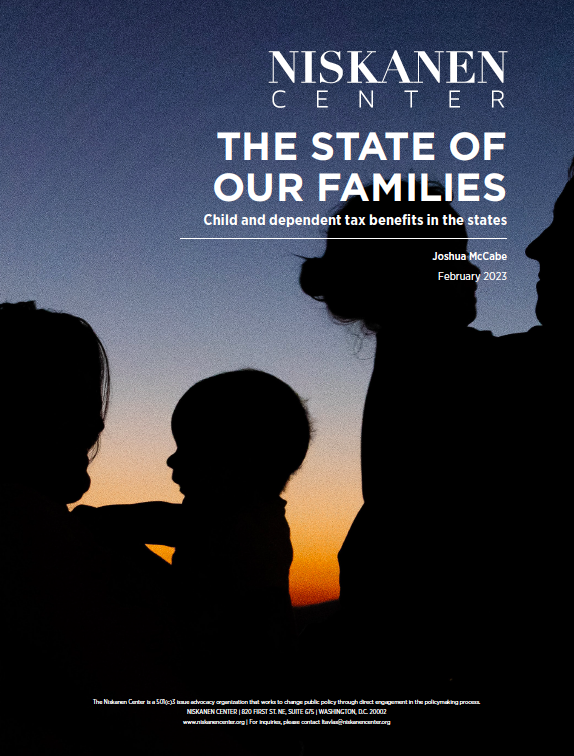Key takeaways
- Thirty-eight states now have some sort of family tax benefit to help with the cost of raising children or caring for adult family members.
- Income eligibility, dependent eligibility, and benefit amount vary widely across the states. This brief provides a comprehensive “state of the states” overview describing these benefits.
- Policymakers should embrace three principles when designing or reforming family tax benefits: including as many families as possible, targeting based on age, and converting existing dependent exemptions and other child-related tax benefits into streamlined credits for children and dependents.
Introduction
A quiet revolution is taking place in statehouses across the country as policymakers rethink their approach to supporting families in state tax codes. Tax credits for children and other dependents, once rare, are increasingly common across the states. Two major federal reforms have spurred states into action.
First, the Tax Cuts and Jobs Act of 2017 eliminated personal exemptions for dependents and redirected the savings to a larger Child Tax Credit (CTC) and a new Credit for Other Dependents. Many states had previously tied their personal exemptions to the federal code. With the elimination of federal exemptions, some states, such as Arizona and Idaho, followed the federal lead and replaced exemptions with nonrefundable tax credits for children and dependents.
Second, the American Rescue Plan Act of 2021 built on these reforms by temporarily making the federal CTC more generous and “fully refundable,” which made it available to all families regardless of income for the first time. Once again, several states, such as Massachusetts and Vermont, followed the federal lead by introducing or converting existing exemptions into fully refundable credits for children and dependents.
Twenty states now have tax credits for children and dependents to help with the cost of raising children or caring for disabled and elderly family members. Another 26 (some overlapping) still have similar exemptions or deductions. These family tax benefits vary widely in terms of eligibility, structure, and benefit amounts. This brief provides state advocates and policymakers with a comprehensive overview of these family tax benefits across the 50 states.
In addition, it elevates three principles for reform to guide state policymakers as they rethink their approaches to supporting families. All policymakers support families, but they must balance concerns about poverty, work, marriage, complexity, and cost when deciding how to best structure any reform. This section will highlight several state case studies to showcase potential pathways and pitfalls.
State-specific briefs
Minnesota’s proposed child tax credit is good but could be great
New York’s proposed Working Family Tax Credit is the boldest reform yet
New Mexico child tax credit expansion needs simplification
Connecticut should reform their EITC in conjunction with proposed child tax credit
What Senator DeWine can teach Governor DeWine about family tax policy
Proposed Illinois Child Tax Credit is a step in the right direction
Photo credit: iStock
